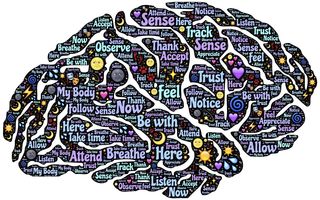Post-Traumatic Stress Disorder
Cranioelectrical Stimulation for Concussion and PTSD
What is it like to stimulate your brain? A patient's experience.
Posted December 9, 2019

I wrote back in July about audiovisual entrainment (AVE), one of the neuroplastic treatments for my brain injury that my psychologist introduced me to. He also used what he called "alpha-TENS," which I now know as cranioelectrical stimulation or CES.
Because of my experience with CES and, later on, tDCS (transcranial direct current stimulation), I theorized in my book Concussion Is Brain Injury: Treating the Neurons and Me that the brain will more likely respond to and not be damaged by electrical current in the same range as it creates. While electroconvulsive therapy produces approximately 800 milliamperes of electrical current, CES stimulates at 1 to 3 milliamperes (PDF). Yet CES is effective with no side effects.
Still, the very idea of using CES to pass electricity through the brain conjures images of being strapped down against your will, cartoon lightning bolts coming at your skull. To allay those ungrounded fears, I present my experience with CES.
I was introduced to CES when life was coming at me fast, like a train with a deer-freezing spotlight on. One session, my psychologist came round to my chair and showed me a small, beige, rectangular box with a wire coming out of it that branched into two thin wires ending in ear clips. He explained that he would clip these onto my ears. He'd first use a dropper to drop saline on each clip to ensure conductivity.
I understood the need for salty water. I wasn't too sure about the idea of electricity flowing through my earlobes. But that box sure was small. How much current could a battery zap me with?
Not much.
My psychologist explained each step slowly to match my brain-injured rate of processing. He repeated that procedure in succeeding sessions a few times because he knew I might not have remembered the device nor why he was using it on me.
He used it to relax me.
After clipping on and turning on the device, he raised the intensity slowly. Everyone has different levels of sensitivity, and he knew I was very sensitive. He didn't want my earlobes to prickle with electricity. That would mean both the seal between clips and earlobes was incomplete, and the intensity was too high for me. He wanted to raise the intensity just enough for me to feel the relaxation effect without unpleasant electrical buzzing or prickles.
Although AVE was more powerful, the CES relaxed me so that I could share the latest hell I'd endured that week, and he could determine how to treat me. He recommended to my insurance company that they purchase a home unit for me. When my lawyer eventually forced them to do that, I couldn't unpack the box quickly enough. The unit had six sessions. I tried all six and soon figured out which ones calmed me best and promoted sleep.
After several years, the unit died. I replaced it with a new CES device from Mind Alive Inc. and have used it almost daily ever since.
I wet the clips and my earlobes with tap water. In dry, wintry air, I must ensure my earlobes are very wet; otherwise, they dry up before I get the clips seated. I clip the clips on to my earlobes, adjusting their position if my earrings get in the way. Although the instruction manual recommends removing glasses and earrings, I don't find either a problem as long as there's skin between earring and clip. The clips are not tight at all.
I press the "on" button, choose the 100Hz session, increase the intensity to my desired level, then stuff the device in my pocket or carry it around in my hand or lay it near me. Yes, I can walk around with it, eat breakfast, check emails, or have it encourage my brain to fall asleep.
It doesn't buzz my ears.
Yet it alters my neurophysiological state. And it reduces pain more effectively than a TENS machine applied directly to the muscles. The pain-relief setting can buzz my ears because I find I need a higher intensity to reduce the pain.
Quicker than medication that took 20 minutes to take effect, the 100Hz session releases my chest's tightness; unlike medication, it calms my brain while creating clarity in my thinking. In the morning, when PTSD entices me to stay in bed, I reach for my CES, for I know once it's on, it may not get rid of the PTSD anxiety completely on bad days, but always enough for me to be able to get up.
CES is an option, along with AVE, for those with brain injury and/or PTSD who want effective relief from the anxiety and pain the injury brings on without medications' side effects, addiction issues, and tolerance build-up. It is a failure of medicine that psychiatrists and psychologists don't have this option in their session toolbox—for two reasons:
1. It facilitates talk therapy. Reducing anxiety during therapy makes it easier for the patient to talk about difficult things, people, and relationships. Recent research using propranolol demonstrated efficacy in reducing physiological response to traumatic memories through psychopharmacology during scripted therapy. CES has the benefit of having no side effects when used properly.
2. It's far easier for a patient to become comfortable with CES when their health care provider introduces them to it, oversees its use, and guides them on how to use it at home.
Copyright ©2019 Shireen Anne Jeejeebhoy. May not be reprinted or reposted without permission.
References
Brunet, A., Thomas, É., Saumier, D., Ashbaugh, A. R., Azzoug, A., Pitman, R. K., … Tremblay, J. (2014). Trauma reactivation plus propranolol is associated with durably low physiological responding during subsequent script-driven traumatic imagery. Canadian journal of psychiatry. Revue canadienne de psychiatrie, 59(4), 228–232. doi:10.1177/070674371405900408




